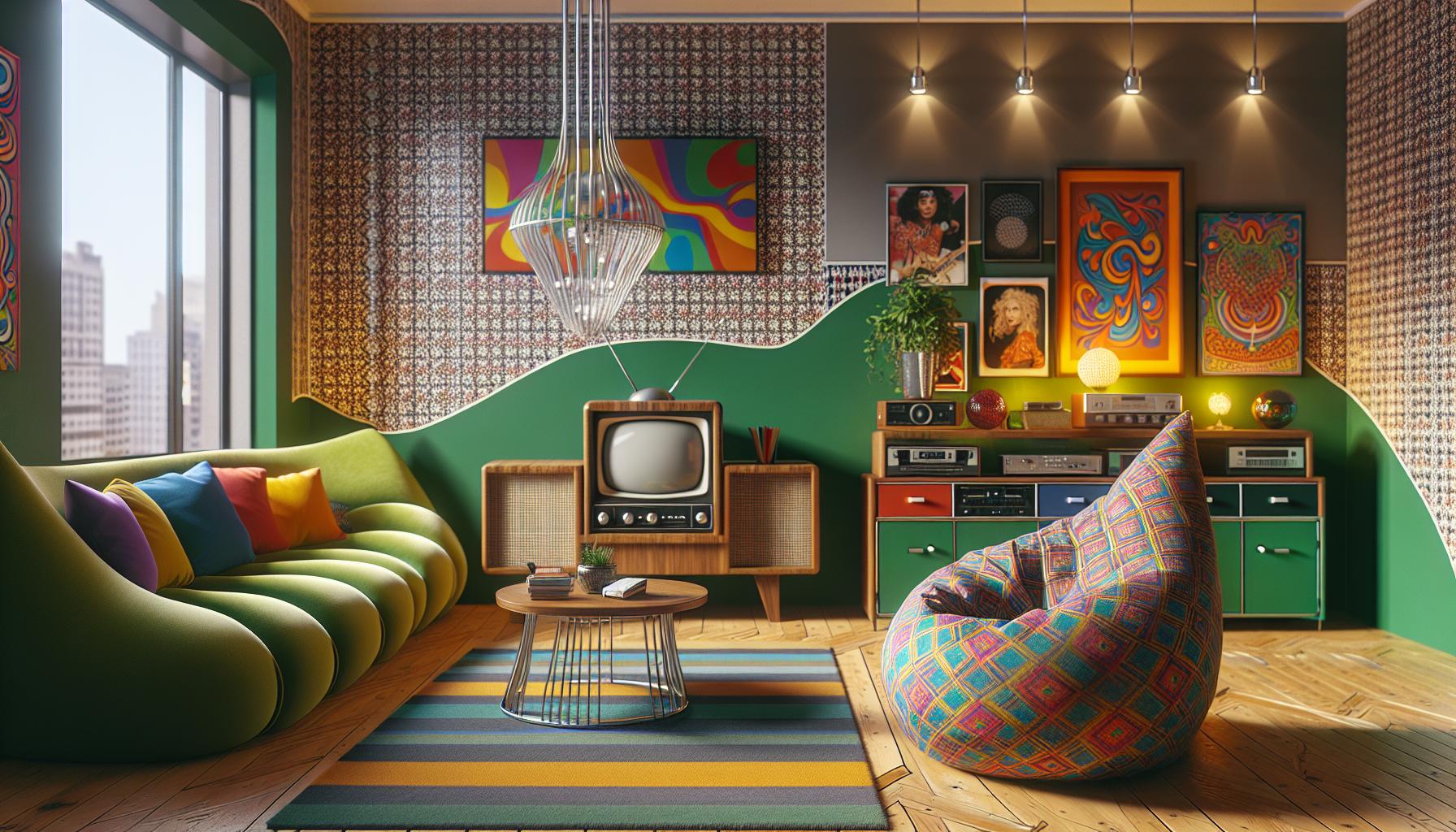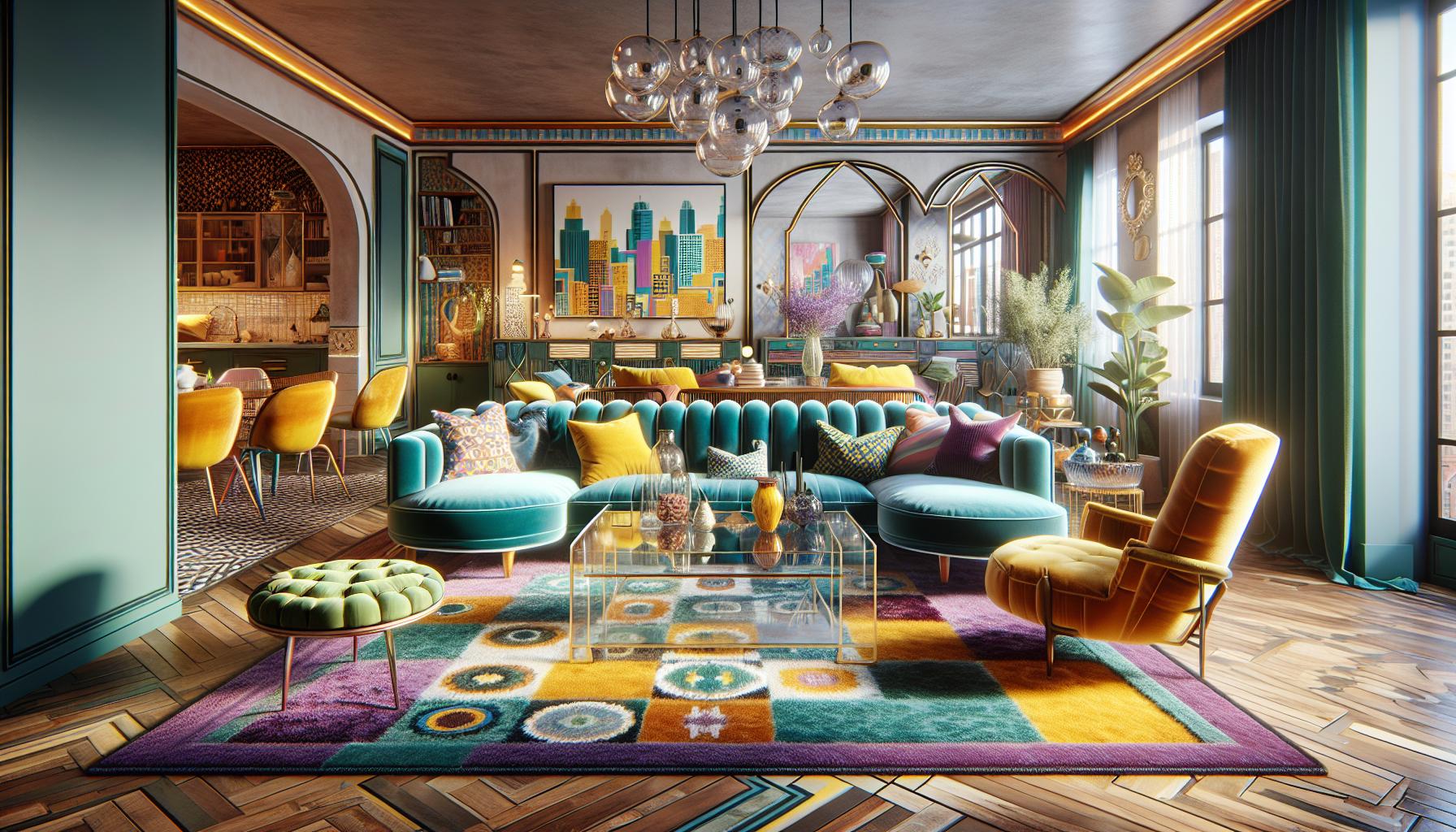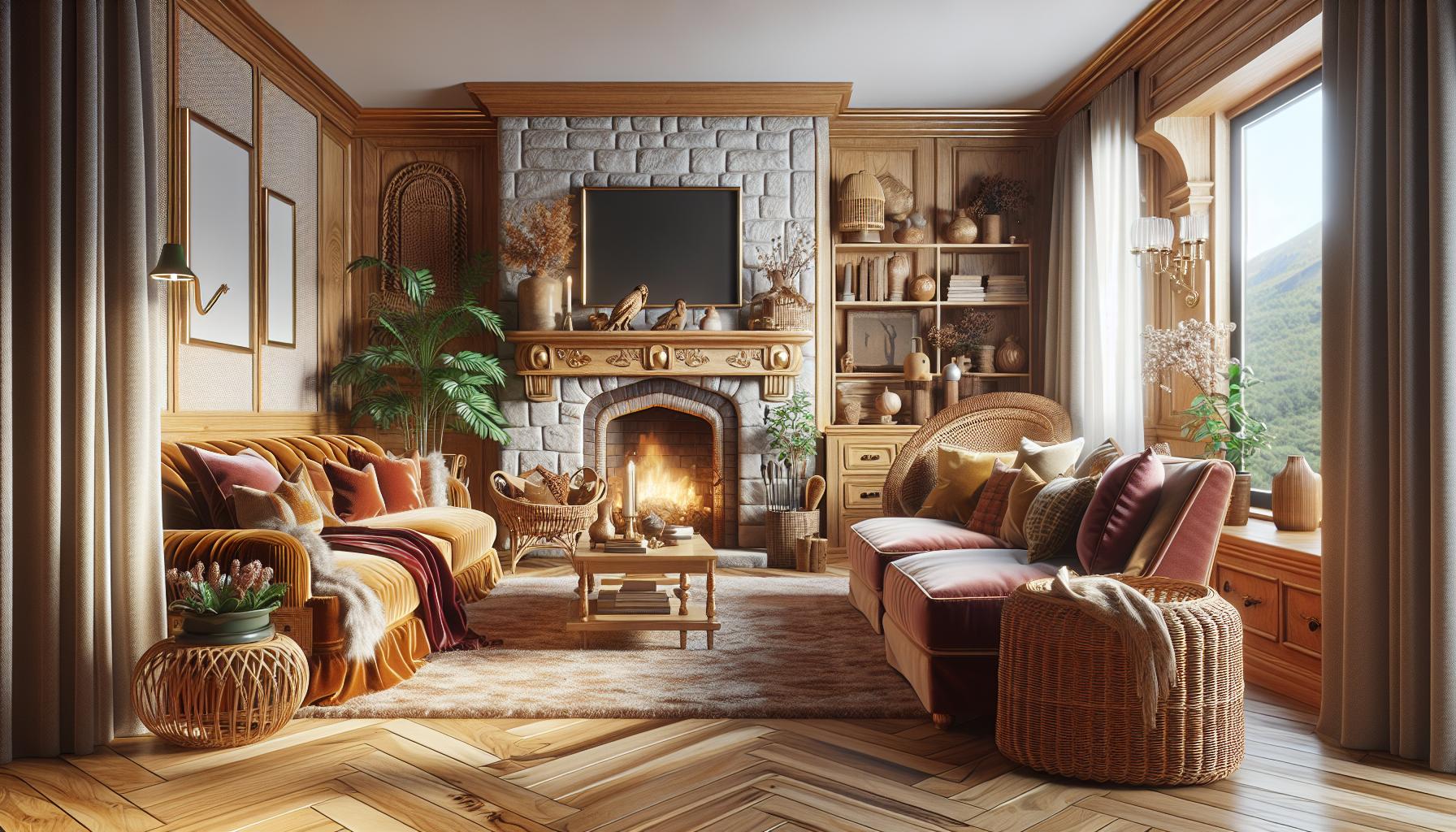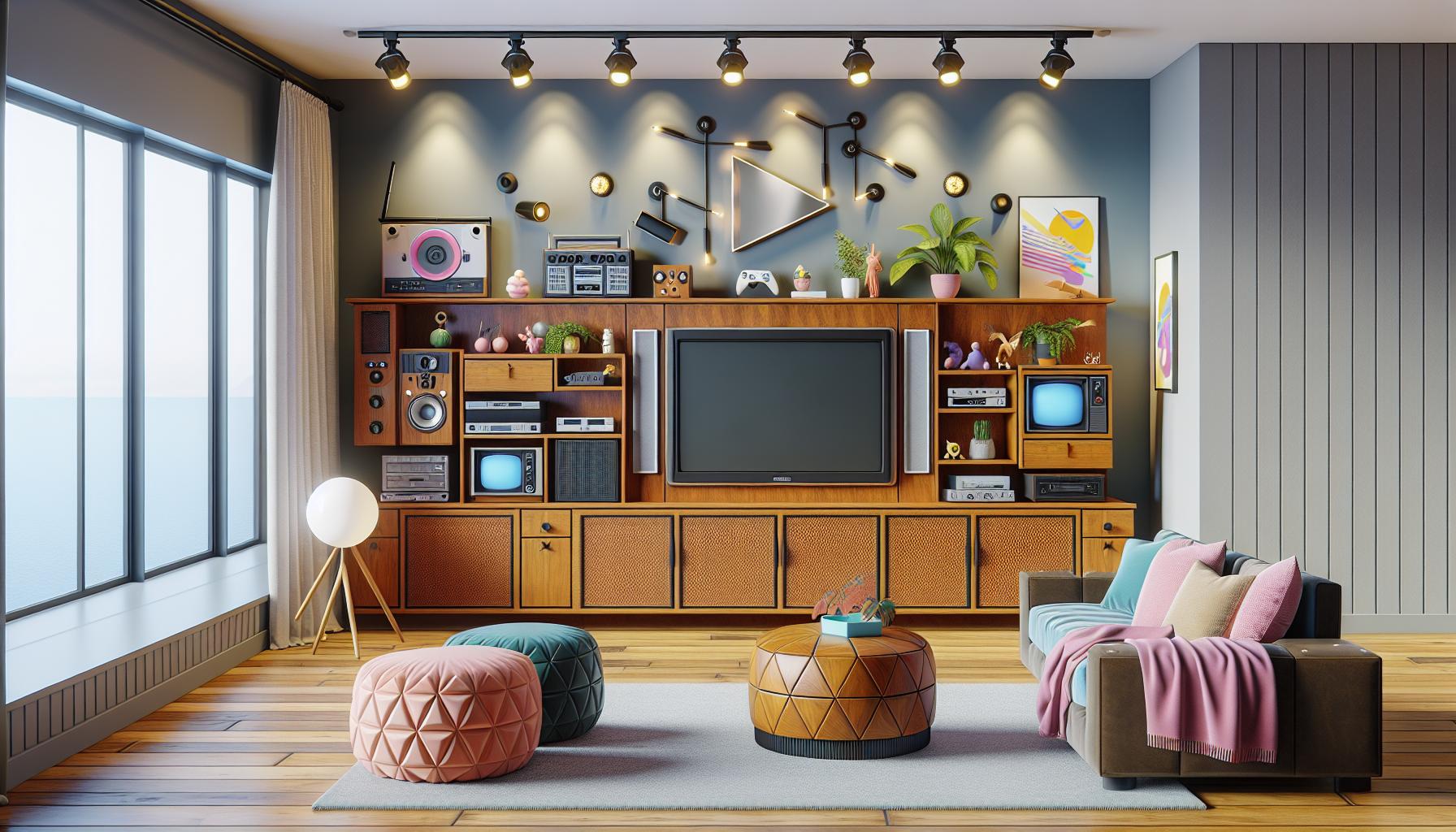
When I think back to the 1990s, a vivid tapestry of bold colors, eclectic patterns, and innovative designs comes to mind. This decade was a fascinating period for interior design, marked by a mix of minimalism and maximalism that defined the era’s unique aesthetic. From the grunge-inspired rawness to the sleek sophistication of modern minimalism, the ’90s offered a diverse palette that still influences today’s design trends.
During this time, designers weren’t afraid to experiment with textures and materials, creating spaces that felt both lived-in and stylish. The rise of DIY culture and the influence of pop culture icons played a significant role in shaping home interiors. Whether it was the cozy warmth of a rustic farmhouse style or the sleek lines of contemporary design, the ’90s were all about expressing individuality and breaking away from the uniformity of previous decades. Let’s dive into what made this era so unforgettable.
Key Takeaways
- The 1990s interior design was characterized by a unique blend of minimalism and maximalism, with designers balancing bold colors and eclectic patterns.
- Key elements included multifunctional spaces, often created with versatile furniture such as fold-out sofas, which catered to evolving lifestyles.
- There was a strong emphasis on texture and material variety, with natural materials like wood and stone gaining popularity, alongside rich textiles such as velvet and leather.
- Iconic ’90s design elements featured entertainment centers that combined style and technology, and statement lighting fixtures that introduced modern, futuristic touches to homes.
- Contemporary interior design continues to draw inspiration from the 1990s, incorporating its signature bold experimentation and nostalgia-driven elements into modern spaces.
1990s Interior Design
The 1990s aesthetic evokes a sense of nostalgia through its bold color palettes and eclectic furnishings. I see elements that draw from various influences, such as geometric patterns and earthy tones that remind me of retro inspirations. Distinct decor elements, like inflatable furniture and bean bag chairs, contributed to a playful atmosphere.
Technology’s impact on design surfaced in the use of futuristic materials and shapes. I noticed that chrome accents and rounded edges created a modern vibe. Wallpaper borders and artificial plants brought warmth and character to spaces, blending technology with nature.
Multifunctional spaces became a necessity, as open-concept living grew popular. Designers created versatile rooms by incorporating items like fold-out sofas and nested tables. This adaptability reflected the evolving lifestyle of that era, emphasizing convenience without sacrificing style.
The 1990s aesthetic’s charm lies in its ability to balance whimsy and practicality. I find that it’s a testament to an era unafraid to mix the old with the new, creating environments that were as unique as the individuals inhabiting them.
Dominant Trends Of 1990s Interior Design

Minimalism and bold colors defined ’90s interior design, creating a distinctive and memorable aesthetic. Eclectic furniture paired with emerging design philosophies further enriched this vibrant era.
Minimalism Meets Bold Colors
Minimalism gained popularity in the ’90s, emphasizing clean lines and open spaces. Yet, this was juxtaposed with bright color schemes. Bold colors like teal, purple, and mustard yellow often adorned minimalist spaces, creating an intriguing contrast. Designers favored geometric patterns, large wall art, and statement pieces to enliven austere environments.
Eclectic Furniture Styles
Furniture took a mix-and-match approach, reflecting diverse tastes and influences. Pieces like curvy couches, vintage-inspired chairs, and glass coffee tables created eclectic harmonies. Patterned rugs, metallic accents, and wood textures blended to add depth and warmth. This eclectic style embraced both old and new, showcasing individuality by combining elements from different eras and cultures.
Popular Materials And Textures

During the 1990s, the choice of materials and textures added distinct character to interior spaces. Designers creatively mixed and matched, contributing to a dynamic and visually diverse aesthetic.
The Rise Of Natural Materials
Natural materials gained prominence, enhancing interiors with organic warmth. Wood, especially in honey and oak finishes, became a staple in flooring and furniture. Stone, often used for countertops and fireplaces, provided a touch of rustic elegance. Wicker and rattan brought an earthy feel to accessories like chairs and baskets, echoing the era’s appreciation for eco-friendly design.
Textural Variety In Fabrics
The decade embraced textural richness in fabrics, offering both visual and tactile appeal. Velvet, with its lush softness, found its way into upholstery and drapery, lending luxury to living rooms and bedrooms. Leather, commonly used for sofas and chairs, introduced sophistication and durability. Varied textiles like chenille and brocade added depth and complexity, complementing the eclectic nature of ’90s interiors.
Iconic 1990s Interior Design Elements

The 1990s interior design scene captured the spirit of change and innovation. Its distinctive style elements vividly mirrored the technological and cultural transformations of the decade.
Entertainment Centers And Home Technology
In the ’90s, entertainment centers became focal points in living rooms. Large, multifunctional units housed televisions, stereo systems, and video game consoles, reflecting the integration of home technology. These entertainment centers often featured built-in shelving and cabinetry to accommodate various media devices and accessories. Their designs utilized warm wood finishes or sleek laminate surfaces, complementing the era’s aesthetic focus on practicality and style.
Statement Lighting Fixtures
Lighting fixtures in the ’90s moved beyond mere functionality, becoming key design features in homes. Track lighting, often in brushed metal finishes, became popular for its flexibility and modern appeal. Chandeliers with geometric or minimalist designs added sophistication to dining and living areas. Incorporating halogen lamps and colorful neon lights introduced a futuristic touch, perfectly aligning with the decade’s penchant for bold experimentation and eclectic style.
Influence Of 1990s Interior Design Today
1990s interior design trends continue to shape modern spaces, blending nostalgia with contemporary aesthetics. These influences manifest in various modern interpretations, keeping the spirit of the ’90s alive.
Modern Takes On 1990s Styles
Designers today pay homage to the ’90s by revisiting its signature elements with a fresh twist. Curvy furniture from the era, like couches and chairs, now feature updated fabrics and color schemes, catering to contemporary tastes. Reimagined multifunctional spaces reflect the ’90s open-concept trend, incorporating innovative storage solutions and seamless indoor-outdoor transitions. Vibrant color palettes transform into accent walls or statement décor, offering modern spaces a touch of retro flair with a subtlety that appeals to current sensibilities. The use of geometric patterns in textiles and wallpapers maintains the decade’s love for visual contrast, blending nostalgia with modern minimalism.
Why 1990s Design Continues To Appeal
Nostalgia for the 1990s drives its ongoing appeal, as many fondly recall the unique styles of their childhood or early adulthood. The eclectic nature of the era’s design allows for personalization, resonating with those seeking individuality in their living spaces. The eco-friendly materials from the ’90s, like wood and rattan, align with today’s sustainability efforts, increasing their relevance. Bold experimentation characteristic of the decade encourages diverse design expressions, empowering people to combine elements in unconventional ways. Ultimately, the 1990s charm lies in its balance of whimsy and practicality, providing a retro aesthetic that complements modern living.
Nostalgia And 1990s Aesthetic
Reflecting on the 1990s interior design trends, it’s clear that this decade was a vibrant tapestry of styles that embraced both minimalism and bold experimentation. The ’90s offered a unique blend of individuality and innovation, allowing for a personal touch in every home. This era’s influence continues to resonate today, as designers incorporate its elements into modern spaces with a nostalgic twist. The enduring appeal of 1990s design lies in its ability to balance whimsy with practicality, making it a timeless source of inspiration for those seeking to infuse their living spaces with character and charm.
